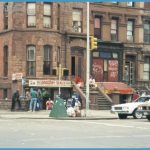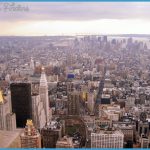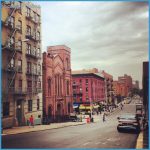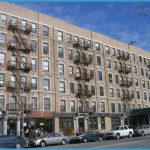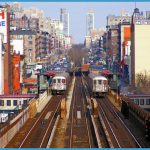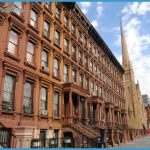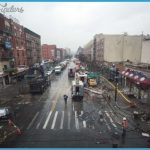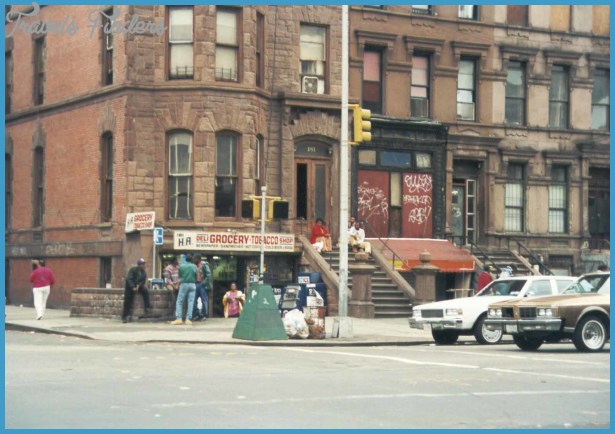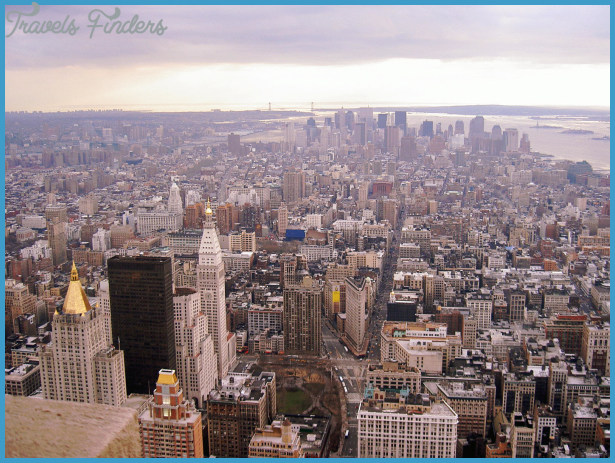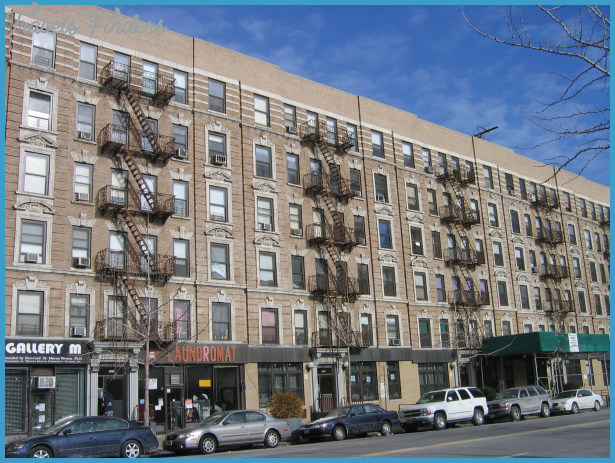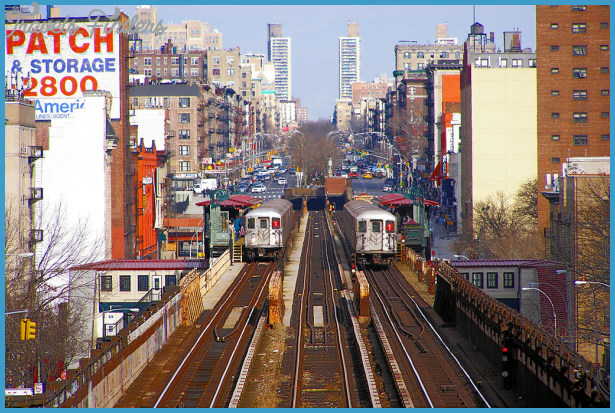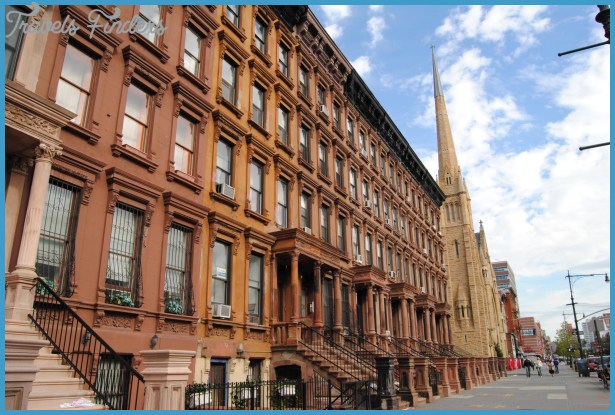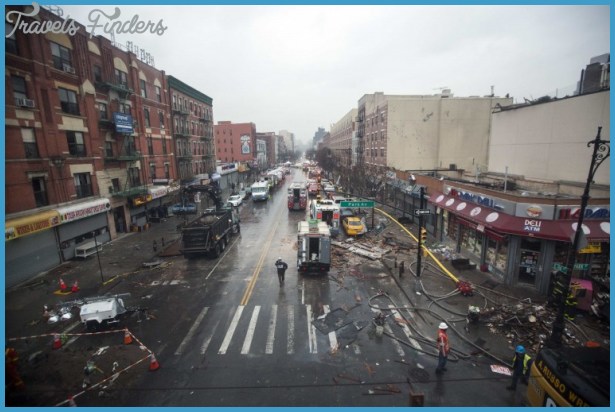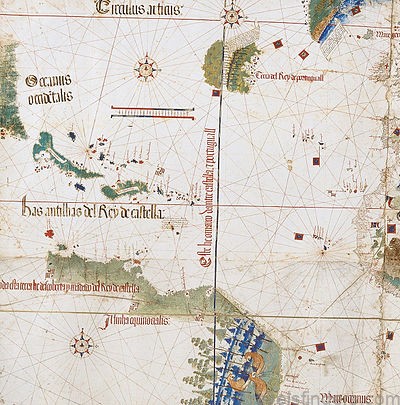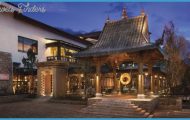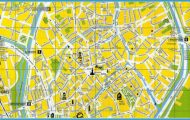If you haven’t seen Harlem, you haven’t seen New York, proclaim real lovers of the town. Tourists who want to see the city’s underside for themselves should follow certain ground rules: do not go there alone or in too large a group; wear fairly inconspicuous clothing; take as little money as you can get by with, no jewellery, and above all, don’t carry a camera; stick to the main shopping streets (especially 125th); take a taxi so you can avoid the sparsely populated, hence more dangerous, streets: and. lastly, don’t go there at night.
Probably the best way to visit Harlem is with a guided tour. There vis one agency, the Penny Sightseeing Company, which is run by blacks who want to show their community to outsiders, concealing neither the best features nor the worst. You must book with them the previous day (telephone: 247-2860).
Harlem starts at 110th Street, at the northern end of Central Park, and stretches as far as 162nd Street. Just a few years ago it was the home of a million blacks from the South and the Caribbean islands. Today there are barely half a million. Optimists attribute this exodus to new housing programmes and the improvement in living standards among black people. The pessimists counterclaim that the poor have been forced out of Manhattan by the increasing dilapidation of their ghetto, and have only gone as far as outlying districts such as the South Bronx, which has become a second Harlem. There’s some truth in both arguments.
Founded by Dutch settlers. Harlem remained a village for a long time. Not until the end of the 19th century, at the time of the huge wave of immigrants, was it assimilated into the town. Since the newcomers settled on the Lower East Side, middle-class Americans decided to put a gap between themselves and these ill-bred, noisy people. A lot of families built second residences in Harlem, then a purely residential district, and some traces of its former glory can still be seen on the building fa9ades.
Black people started moving in around 1910, the beginning of the Jazz Age, those wild years that came to a peak about 1930. New York was the Promised Land for southern blacks, who found untold freedom here. Duke Ellington and Cab Calloway played the Cotton Club and the Apollo, drawing crowds of white people up to Harlem.
It’s difficult today to picture what those years must have been like. The Apollo is still there, but it’s no more than a shadow of its former self (though plans are afoot to build it up again into a great centre of jazz) and Harlem looks like a bombed-out city. The process of destruction is pitifully simple: tenants get behind on rent payments and on gas and electricity bills. These services are cut off, shortly followed by the water supply. Winter comes, pipes freeze, then burst. Life becomes impossible. But the municipality can only rehouse the homeless. So, inevitably. somebody sets fire to the block: it’s tke only way of getting into some warm place for the winter. The building stays there, a blackened shell, until it is about to collapse. In the end, it will be torn down leaving behind an ugly gap But some nice streets remain, ‘ particularly around Edgecombe Avenue, an area peopled by wealthy blacks who could afford to move away but have stayed out of solidarity. That’s where you’ll find the Morris Jumel Mansion (Edgecombe and W. 160th Street), a stately house set in a garden, one of New York’s last reminders of the Georgian architecture of colonial days. Built in 1765 and used during the American Revolution as George Washington’s headquarters, it was bought in 1810 by Stephen Jumel, a wine merchant from France. The third vice president, Aaron Burr, married Jumel’s widow and lived here for a time. The mansion has become a museum devoted to the Revolutionary War period. Open Tuesday to Sunday, 9 a.m. to 4 p.m.
Religion has always played an important part in the lives of black Americans. The Black Muslims have flourished in recent years, and there are numerous evangelical Protestant sects, many unknown elsewhere, that have transformed some ancient movie houses into pop temples. Try to attend one of these services. Choose one of the churches around 60 Edgecombe Avenue and ask the minister if the congregation would object to your presence. You simply must stay for coffee after the service if you don’t want to offend your hosts. And don’t forget to put on your Sunday best. White Americans are not always welcome, but Europeans have a better reputation among these blacks and are almost sure to be received kindly.
The east side of Harlem is now largely the domain of Puerto Ricans. It’s even known as Spanish Harlem. You can quite safely visit the covered market under the railroad (Park Avenue from 111th to 116th Streets). Everything there the crowds, the music, the smells seems to belong more to Mexico or the Caribbean than the United States. You can buy mangoes, papayas, sugar cane, rosaries blessed by the pope, powders against the evil eye, plants inducing abortion and love potions. The market is open every day but most active on Saturdays. Y ou’U pay less if you can speak’a few words of Spanish.
In mild weather local life moves outdoors in crowded Harlem. Lavish new car is a symbol of success.

